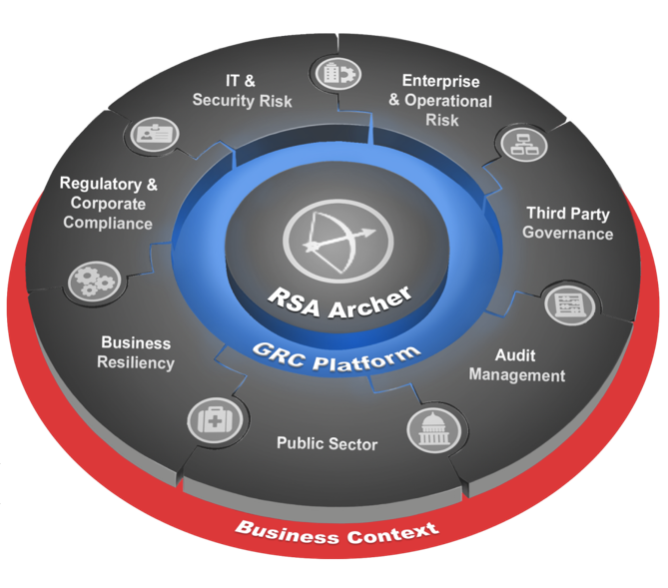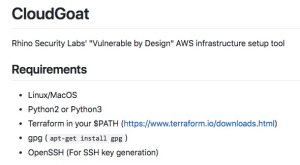 This has been quite a year for data breaches, with reports that numerous unsecured Amazon Web Services storage containers were inadvertently made public, a rise in hidden cryptomining malware, and lots of victims continuing to fall for ransomware and other botnet attacks. So, with that context, let’s look at what security trends 2019 could bring and ways to prepare for the coming year. I cover security awareness training, hiding malware in plain sight with fileless and other techniques, the rise of FIDO2 and better cloud security in my story in HPE’s Enterprise.nxt blog.
This has been quite a year for data breaches, with reports that numerous unsecured Amazon Web Services storage containers were inadvertently made public, a rise in hidden cryptomining malware, and lots of victims continuing to fall for ransomware and other botnet attacks. So, with that context, let’s look at what security trends 2019 could bring and ways to prepare for the coming year. I cover security awareness training, hiding malware in plain sight with fileless and other techniques, the rise of FIDO2 and better cloud security in my story in HPE’s Enterprise.nxt blog.
Category Archives: Published work
RSA: Ten tips to make your Archer deployment successful
 One of the best takeaways I got from attending the RSA Archer Summit 2018 this past September was to listen to customers tell their stories about their deployments. I have put together a series of tips based on this testimony from several IT managers who have been using the product for many years. Some of them have asked me to obscure their identity, but the message rings true. You can read their suggestions here.
One of the best takeaways I got from attending the RSA Archer Summit 2018 this past September was to listen to customers tell their stories about their deployments. I have put together a series of tips based on this testimony from several IT managers who have been using the product for many years. Some of them have asked me to obscure their identity, but the message rings true. You can read their suggestions here.
RSA blog: Everyday we should practice cybersecurity awareness
Yes, just like last October, this month we celebrate National Cybersecurity Awareness Month. So let’s look at what happened in the past year since we last honored this manufactured “holiday.”
We started off 2018 with more than three million records breached by Jason’s Deli, moved into spring with five million records from Saks/Lord&Taylor and 37 million care of Panera Bread restaurants. May saw breaches from fitness tracking company PumpUp and clothing retailer UnderArmor. July was a new low point with breaches from Ticketfly, the Sacramento Bee newspaper chain, and MyHeritage. And let’s not forget Exactis with 340 million records placed online.
And there are many, many other companies who have been breached that I haven’t even mentioned. The issue is that with security awareness, you are only as good as yesterday’s response. In this post for RSA’s blog, I have several suggestions on ways to make this month more meaningful and actionable for IT managers.
RSA blog: Everyday we should practice cybersecurity awareness
Yes, just like last October, this month we celebrate National Cybersecurity Awareness Month. So let’s look at what happened in the past year since we last honored this manufactured “holiday.”
We started off 2018 with more than three million records breached by Jason’s Deli, moved into spring with five million records from Saks/Lord&Taylor and 37 million care of Panera Bread restaurants. May saw breaches from fitness tracking company PumpUp and clothing retailer UnderArmor. July was a new low point with breaches from Ticketfly, the Sacramento Bee newspaper chain, and MyHeritage. And let’s not forget Exactis with 340 million records placed online.
Even with this list, I am sure that I haven’t even accounted for many other breaches of the past year, including the various data leaks from GoDaddy, LevelOne Robotics, Nice Systems, Los Angeles’ 211 service center, Localblox, Octoly and Viacom. These and many others put unprotected AWS S3 storage buckets online and forgot to secure them. All it took was a single check box and the data in all of these situations would have been easily secured.
Of course, who doesn’t remember Facebook’s woes, which thanks to Cambridge Analytica divulged more than 100 million of our accounts. And if we look beyond just private data leaks, who could forget the City of Atlanta finding out their backups were worthless after being hit by a ransomware attack. This resulted in the spending millions of dollars, eventually close to their entire annual IT budget to learn that lesson.
With security awareness, you are only as good as yesterday’s response. Every day, someone is trying to leverage their way into your network, your data and your corporate reputation. Every day, your network is being bombarded with thousands of phishing attempts. Someone is sending multiple emails with infected attachments; hackers are continuously trying reused or common passwords, and coming up with new blended threats that we don’t even know how they are constructed. Every day, users are attaching infected phones and laptops to your network that can serve as new entry points for attacks. So do you really want to take a moment and celebrate? Go right ahead. Go have a piece of cake.
But let’s get down to work and make October more meaningful. Let’s use this month to try to do something positive about security awareness that can last more than just a few days and a few meek attempts. It is time to make security awareness a year-round event. And this isn’t just for the IT department, or your security staff, but something that has to happen across the board. Here are a few tips to get started.
Make a goal that this time next year will be the time when all of your users have embraced MFA or FIDO for their business-critical logins. The tools are getting better, FIDO is being supported with more products, and even Facebook and Google and Twitter now support MFA logins. Many of the breaches mentioned above would have not happened, or have had less impact, had accounts been properly secured with multiple authentication factors.
Use this MFA effort as a more complete assessment of your identity and access management strategy. Examine what you are doing here and whether any of the newer technologies – such as adaptive authentication and better risk assessments — can improve your login security.
Learn from Atlanta’s woes and make sure your backups are actually useful. Spend some time ensuring that you can reconstruct your servers in case of anything unfortunate happens from a disk crash to a ransom attack. Not too long ago, I had two hard drive crashes on my equipment in a single week. I didn’t lose any data, thankfully – but I did lose a lot of time in getting both PCs back up and running. And I learned how I can improve my recovery procedures a bit better too. You should conduct regular disaster exercises to see what happens when parts of your network or particular servers are taken offline, and how long it takes you to recover from these events. Everyone can benefit from more resilient operations.Review your cloud storage buckets for unintended data leaks. There are numerous security tools (if we can mention RiskIQ’s CloudGoat) that can help you assess your storage buckets and ensure that they are properly protected and not sitting ducks online.
Do continuous user awareness training. There are many vendors that can help with putting together a program. The trick is not doing so just once a year, but on a continuous basis. Think about how you can offer incentives to your users, not just make the training onerous and thereby ineffective. One vendor offers a program that performs assessment, education, reinforcement, and measurement in a continuous cycle.
Go back to security school. Folks like SANS offer plenty of training for security staff to brush up on their techniques and tools. We all need refreshers to stay current with what the bad guys are constantly cooking up.
It’s time we realized that security awareness needs to be a year-long focus and not just one-and-done.
Security Intelligence blog: Is Your Site Protected Against Drupal Security Flaws?
 Drupal is a leading open source content management tool that hosts a significant portion of the most popular websites on the internet. If you have not heard about the Drupal security flaws from earlier this year, then you need to take a closer look at what happened and start taking precautions to protect your own installations. You can read my post in IBM’s Security Intelligence blog here.
Drupal is a leading open source content management tool that hosts a significant portion of the most popular websites on the internet. If you have not heard about the Drupal security flaws from earlier this year, then you need to take a closer look at what happened and start taking precautions to protect your own installations. You can read my post in IBM’s Security Intelligence blog here.
CSOonline: Lessons learned from the Park Jin Hyok indictment
 Last month the US DoJ unsealed this indictment of a North Korean spy Park Jin Hyok that they claim was behind the hacks against Sony and the creation and distribution of Wanna Cry. It is a 170+ page document that was written by Nathan Shields of the FBI’s LA office and shows the careful sequence of forensic analysis they used to figure out how various attacks were conducted. In this post for CSOonline, I talk about some of the implications for IT managers, based on the extensive details described in the indictment.
Last month the US DoJ unsealed this indictment of a North Korean spy Park Jin Hyok that they claim was behind the hacks against Sony and the creation and distribution of Wanna Cry. It is a 170+ page document that was written by Nathan Shields of the FBI’s LA office and shows the careful sequence of forensic analysis they used to figure out how various attacks were conducted. In this post for CSOonline, I talk about some of the implications for IT managers, based on the extensive details described in the indictment.
CSOonline: New ways to protect your AWS infrastructure
 Properly testing your virtual infrastructure has been an issue almost since there were virtual VMs and AWS. Lately, the tool sets have gotten better. Part of the problem is that to adequately test your AWS installation, you need to know a lot about how it is constructed. CPUs can come and go, and storage blocks are created and destroyed in a blink of an eye. And as the number of AWS S3 data leaks rises, there have to better ways to protect things. Rhino Security and Amazon both offer tools to improve visibility into your AWS cloud environments, making it easier to find configuration errors and vulnerabilities.I write about Pacu and CloudGoat tools as well as various AWS services to test your VMs in my article from CSOonline here.
Properly testing your virtual infrastructure has been an issue almost since there were virtual VMs and AWS. Lately, the tool sets have gotten better. Part of the problem is that to adequately test your AWS installation, you need to know a lot about how it is constructed. CPUs can come and go, and storage blocks are created and destroyed in a blink of an eye. And as the number of AWS S3 data leaks rises, there have to better ways to protect things. Rhino Security and Amazon both offer tools to improve visibility into your AWS cloud environments, making it easier to find configuration errors and vulnerabilities.I write about Pacu and CloudGoat tools as well as various AWS services to test your VMs in my article from CSOonline here.
Internet Protocol Journal: Understanding fileless malware
I have written for this excellent 20 year-old publication occasionally. My article in this issue is about fileless malware.
 Malware authors have gotten more clever and sneaky over time to make their code more difficult to detect and prevent. One of the more worrying recent developments
Malware authors have gotten more clever and sneaky over time to make their code more difficult to detect and prevent. One of the more worrying recent developments
goes under the name “fileless.” There is reason to worry because these kinds of attacks can do more damage and the malware can persist on your computers and networks for weeks or months until they are finally neutralized. Let’s talk about what this malware is and how to understand it better so we can try to stop it from entering our
networks to begin with. Usually, the goal of most malware is to leave something behind on one of your endpoints: one or more files that contain an executable program that can damage your computer, corral your PC as part of a botnet, or make copies of sensitive data and move them to an external repository. Over the years, various detection products have gotten better at finding these residues, as they are called, and blocking them.
You can read my article here, along with other fine pieces on the state of the Internet in this month’s edition.
In-house blogging at RSA Archer Summit in Nashville
In August 2018 I was in Nashville, covering the RSA Archer Summit customer annual conference. Here are my posts about the show:
- Mobility announcements wrap up. Archer has a new mobile product and partnered with SIs that integrate with its platform.
- An interview with David Walter, VP at RSA Archer, about their plans. (video clip)
- Why it is time to forget spreadsheets for risk management. You would be surprised where people use spreadsheets. Or maybe not.
- How to succeed at deploying Archer, some lessons learned from the field
- My thoughts on the next phase for Archer
RSA Archer blog: LEAVE THE STONE AGE (AND SPREADSHEET) BEHIND
When I asked RSA Archer VP David Walter who was their competition, he told me earnestly it was the simple spreadsheet. I believe him, especially after what I have seen what people do with spreadsheets over the years that I have been a tech reporter.

Dan Bricklin and Bob Frankston invented the electronic spreadsheet with VisiCalc for the Apple II in 1979. It wasn’t long after that when I began using it on an HP 85 running CPM to build mathematical models working at various jobs in DC. That was a sweet machine, with its three-inch monochrome monitor and all 8K of RAM. Then Lotus 1-2-3 and the IBM PC came along making spreadsheets the go-to general business tool.
It has surprising staying power, given the software has essentially had the same user interface for more than 30 years. In this post for the RSA blog, I talk about the drawbacks of spreadsheets and give four reasons why you want something better for integrated risk management